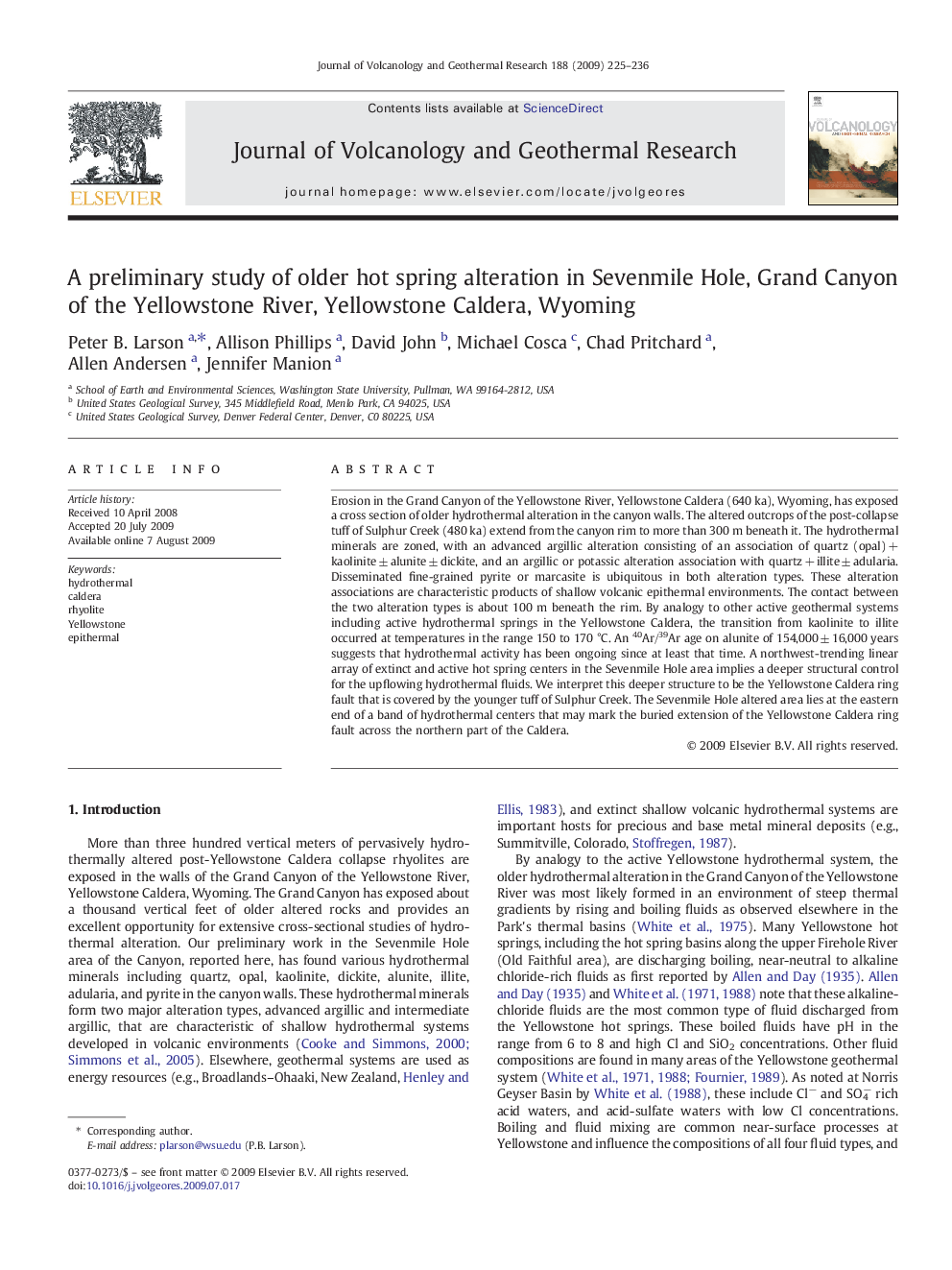| Article ID | Journal | Published Year | Pages | File Type |
|---|---|---|---|---|
| 4713182 | Journal of Volcanology and Geothermal Research | 2009 | 12 Pages |
Erosion in the Grand Canyon of the Yellowstone River, Yellowstone Caldera (640 ka), Wyoming, has exposed a cross section of older hydrothermal alteration in the canyon walls. The altered outcrops of the post-collapse tuff of Sulphur Creek (480 ka) extend from the canyon rim to more than 300 m beneath it. The hydrothermal minerals are zoned, with an advanced argillic alteration consisting of an association of quartz (opal) + kaolinite ± alunite ± dickite, and an argillic or potassic alteration association with quartz + illite ± adularia. Disseminated fine-grained pyrite or marcasite is ubiquitous in both alteration types. These alteration associations are characteristic products of shallow volcanic epithermal environments. The contact between the two alteration types is about 100 m beneath the rim. By analogy to other active geothermal systems including active hydrothermal springs in the Yellowstone Caldera, the transition from kaolinite to illite occurred at temperatures in the range 150 to 170 °C. An 40Ar/39Ar age on alunite of 154,000 ± 16,000 years suggests that hydrothermal activity has been ongoing since at least that time. A northwest-trending linear array of extinct and active hot spring centers in the Sevenmile Hole area implies a deeper structural control for the upflowing hydrothermal fluids. We interpret this deeper structure to be the Yellowstone Caldera ring fault that is covered by the younger tuff of Sulphur Creek. The Sevenmile Hole altered area lies at the eastern end of a band of hydrothermal centers that may mark the buried extension of the Yellowstone Caldera ring fault across the northern part of the Caldera.
